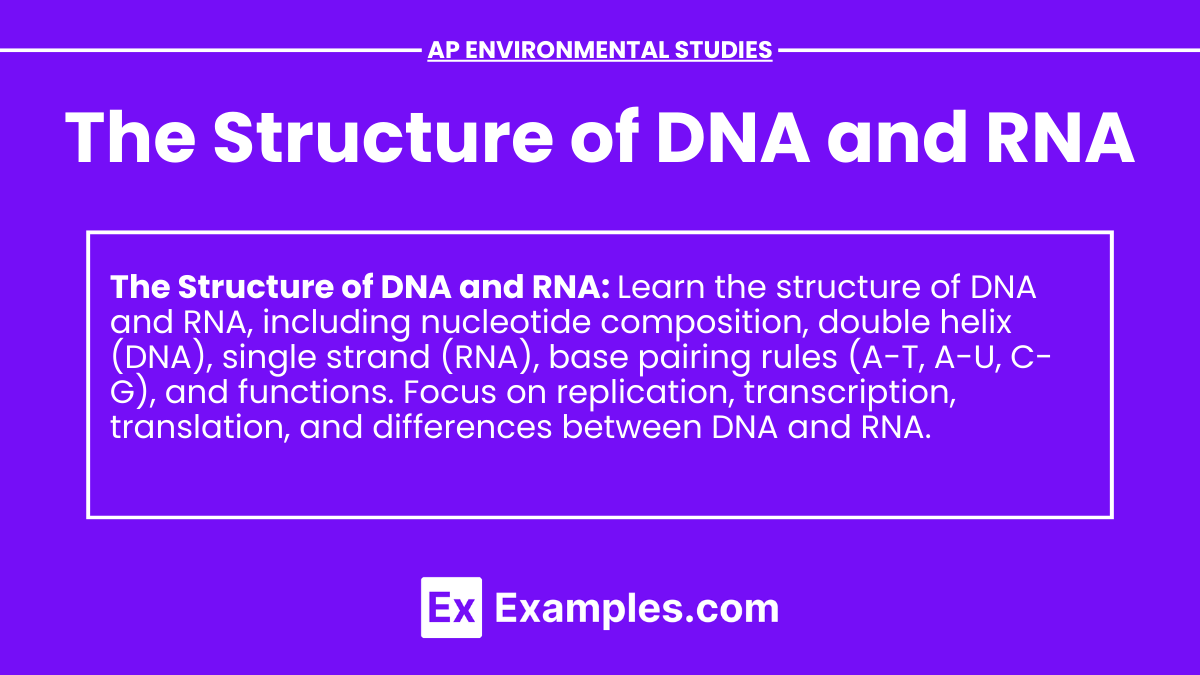In AP Biology, understanding the structure of DNA and RNA is crucial as they are fundamental to genetic information. DNA, with its double helix, and RNA, typically single-stranded, are influenced by water through hydrogen bonding, affecting their stability and chemical properties. The interaction with water vapor can also impact their function and structure, making these biomolecules essential topics of study.
Learning Objectives
Students will understand the structure of DNA and RNA, including nucleotide composition and double-helix formation in DNA. They will learn the roles of hydrogen bonds and chemical properties in maintaining stability and function. Students will compare and contrast DNA and RNA structures and their interactions with water and water vapor. Mastery of these concepts will provide a foundation for exploring genetic information flow and the molecular basis of inheritance in AP Biology.
DNA Structure
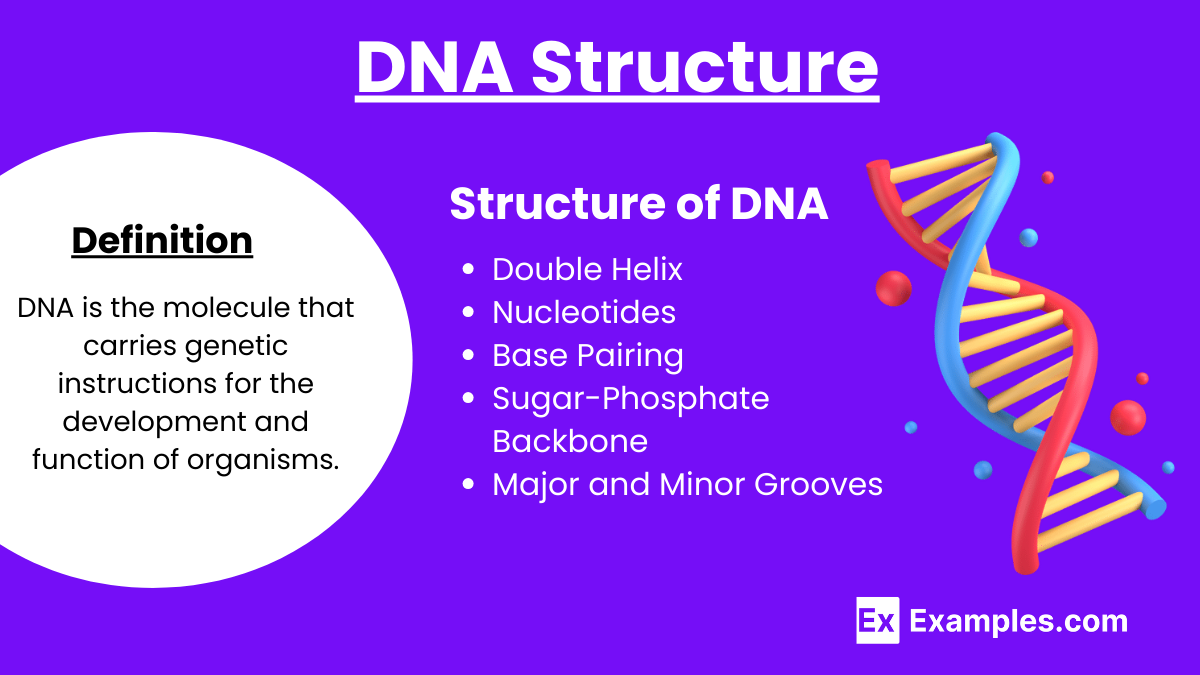
Double Helix
DNA is a double-stranded helix formed by two long chains of nucleotides.
The two strands run antiparallel to each other (one 5' to 3', the other 3' to 5').
Nucleotides
Each nucleotide consists of a phosphate group, a deoxyribose sugar, and a nitrogenous base.
The nitrogenous bases are adenine (A), thymine (T), cytosine (C), and guanine (G).
Base Pairing
Adenine pairs with thymine via two hydrogen bonds.
Cytosine pairs with guanine via three hydrogen bonds.
This specific pairing is known as complementary base pairing.
Sugar-Phosphate Backbone
The sugar-phosphate backbone is on the outside of the helix.
The phosphodiester bonds link the 3' carbon atom of one sugar molecule to the 5' carbon of another.
Major and Minor Grooves
DNA helix has major and minor grooves, which are binding sites for proteins and enzymes involved in DNA replication and transcription.
RNA Structure
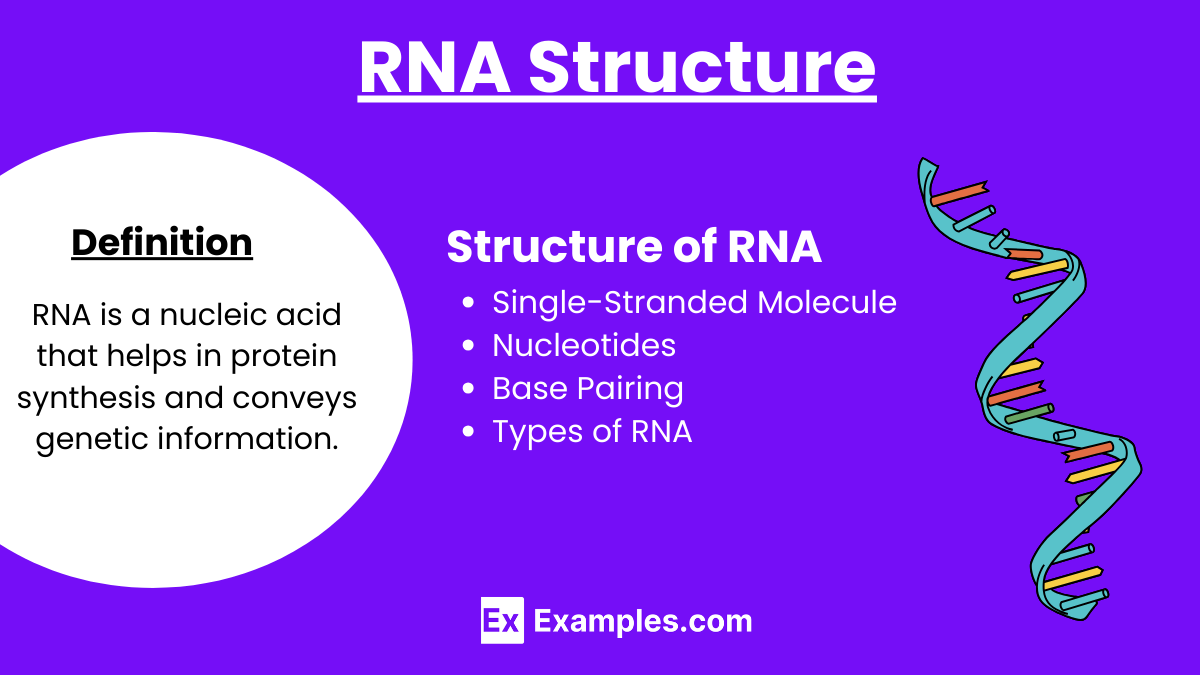
Single-Stranded Molecule
RNA is typically single-stranded but can form complex secondary structures.
Nucleotides
RNA nucleotides consist of a phosphate group, a ribose sugar, and a nitrogenous base.
The nitrogenous bases are adenine (A), uracil (U), cytosine (C), and guanine (G).
Base Pairing
Adenine pairs with uracil in RNA.
Cytosine pairs with guanine.
Types of RNA
Messenger RNA (mRNA): Carries genetic information from DNA to ribosomes for protein synthesis.
Transfer RNA (tRNA): Brings amino acids to the ribosomes during protein synthesis.
Ribosomal RNA (rRNA): Combines with proteins to form ribosomes.
Differences Between DNA and RNA
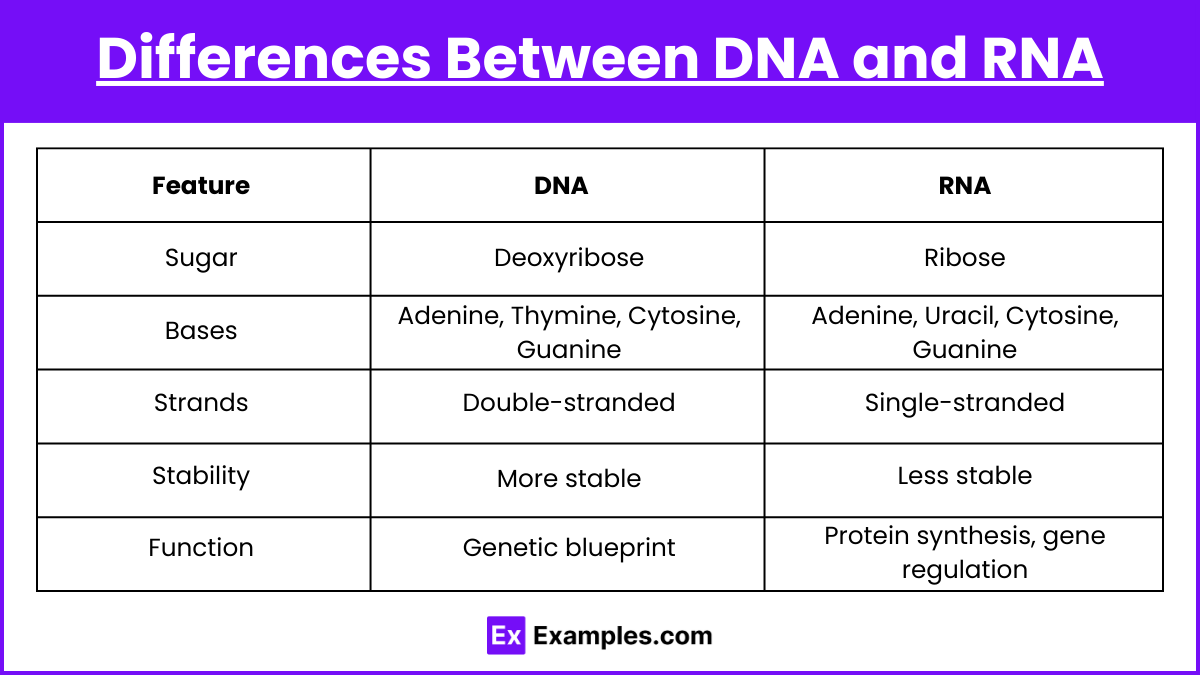
Feature | DNA | RNA |
|---|---|---|
Sugar | Deoxyribose | Ribose |
Bases | Adenine, Thymine, Cytosine, Guanine | Adenine, Uracil, Cytosine, Guanine |
Strands | Double-stranded | Single-stranded |
Stability | More stable | Less stable |
Function | Genetic blueprint | Protein synthesis, gene regulation |
Functions of DNA and RNA
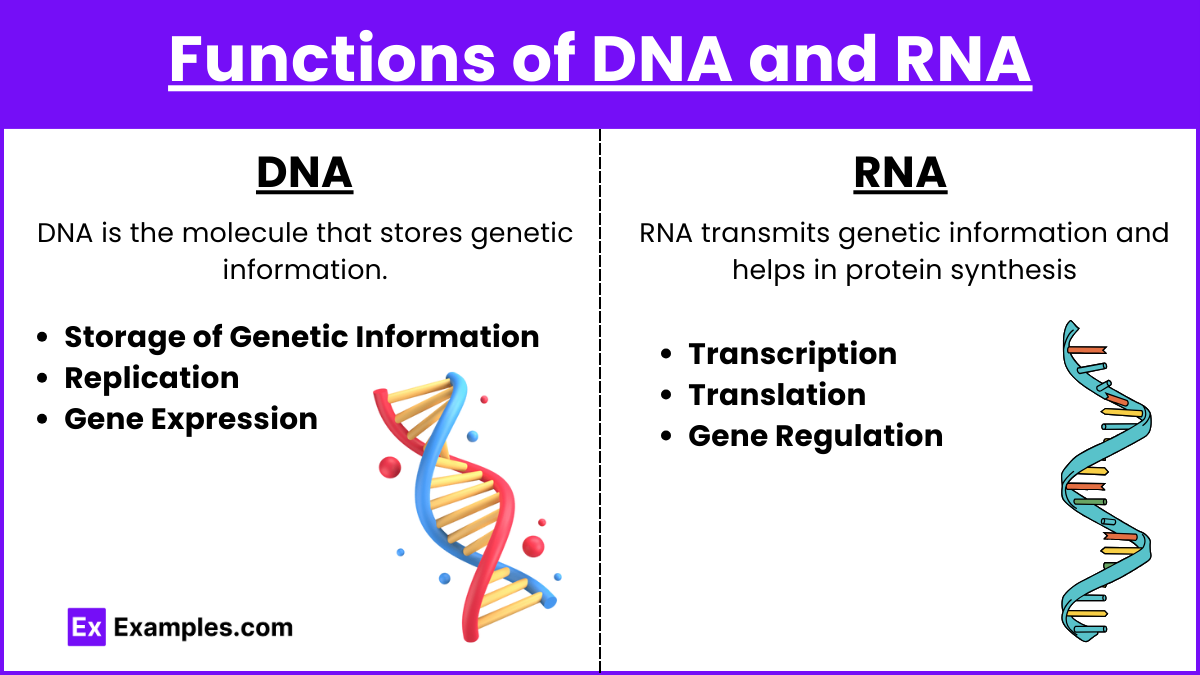
DNA
Storage of Genetic Information: DNA holds the instructions for the development, functioning, growth, and reproduction of all living organisms.
Replication: DNA must be accurately copied during cell division.
Gene Expression: DNA sequences are transcribed into RNA, which is then translated into proteins.
RNA
Transcription: DNA is transcribed into mRNA, which carries the genetic code to the ribosomes.
Translation: mRNA is translated into a specific sequence of amino acids to form a protein.
Gene Regulation: Various forms of RNA are involved in regulating gene expression.

